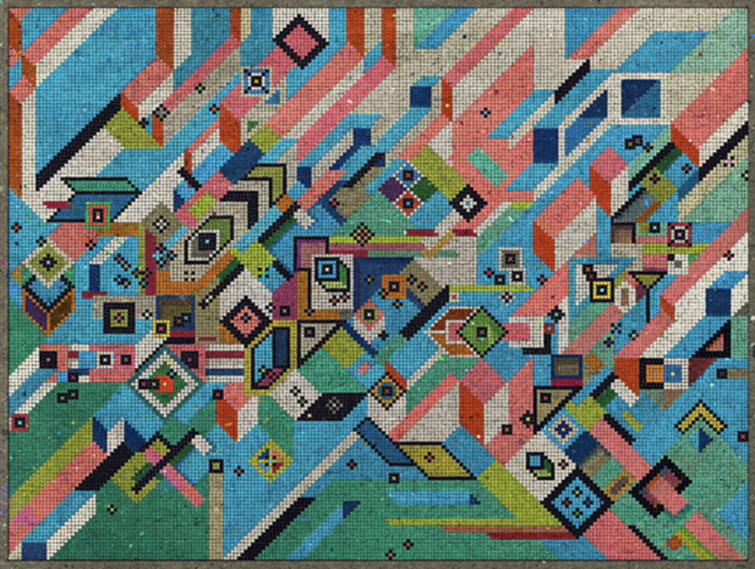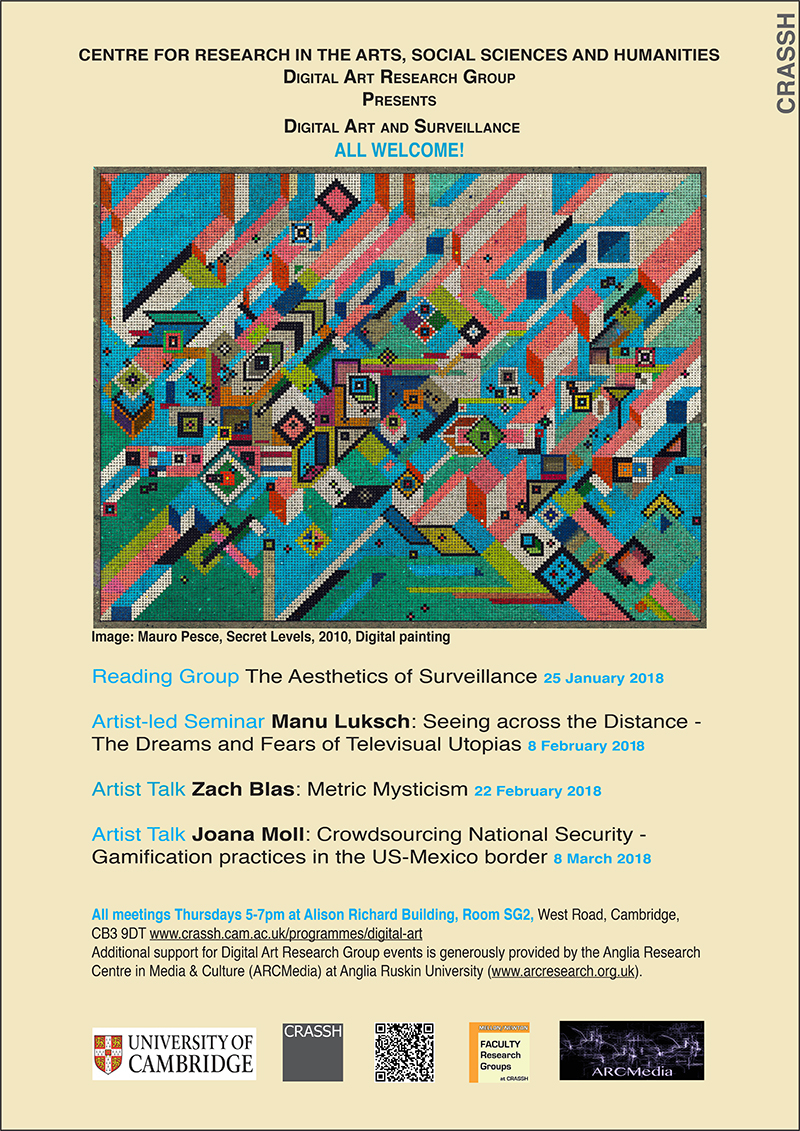Digital Art is one of eleven interdisciplinary CRASSH Research Groups running fortnightly seminars in the academic year 2017-18. Aline Guillermet, Junior Research Fellow at King’s College, Cambridge, introduces the group on behalf of its four convenors (Aline Guillermet, Mara Polgovsky, Vid Simoniti and Martin Zeilinger).

Mauro Pesce, ‘Secret Levels’, 2010, Digital Painting
Q. Aline, how did Digital Art come about?
The group originally started as the Digital Culture research group, a series of seminars and reading sessions which Mara, Vid and I organised during the academic year 2016–17 at King’s College and Queens’ College. Our idea was to create a forum to discuss the impact of digital technologies on contemporary cultural production. Martin came along to the sessions, and this is how we met and started to collaborate.
With our current CRASSH research group, the focus on digital art enables us to have an interdisciplinary approach while deepening our understanding of a specific object of study. As our programme for this year shows, digital art practices engage with fields as varied as finance, activism, technology, and surveillance, and have an impact outside the aesthetic sphere.
Q. By definition, a CRASSH research group has an interdisciplinary question at its core. What’s yours?
What role can digital art play in helping us to understand, critique, and shape the impact of digital technologies on contemporary society? And what, if anything, makes the practices in question recognisably artistic?
As these two related questions suggest, we are interested in digital art not so much as a medium per se, but as a set of practices which reflect both on our current digital context, and on the changing modalities of art within this context.
Q. What were the highlights and/or challenges of your first term as a research group?
Our theme last term was ‘Digital Art and Financialization’, and the challenge we faced at the first reading session was to understand enough of the logics at work in contemporary finance in order to have an informed discussion. This is probably a challenge common to all interdisciplinary research, but finance is a particularly technical field. For instance, we needed to understand the types of financial transactions that govern the financial sphere, in order to assess the response of artists who use blockchain technology (e.g. the cryptocurrency of Bitcoin) as a means to bypass, or subvert, the art market and the hegemony of global finance.
The group is very open, with no obvious expert on these issues, and this allowed us to develop on a common understanding of the technical notions, their broader context, and the theoretical stakes in terms of our research questions.
Q. Could you tell us a bit more about your convenors, speakers and attendees and the perspectives they bring to the discussion?
We all have an interest in contemporary art and technology, but are coming at it from different perspectives. Vid and I both have a background in philosophy, but whereas his research focuses on artistic appropriation of science and technology, mine deals with the impact of the digital on contemporary painting. Mara’s research concentrates on twentieth century Latin American art and visual culture, with a particular interest in cybernetics and aesthetic theory; and Martin is both a Senior Lecturer in Media Studies at Anglia Ruskin University and a practitioner of digital art himself.
Our attendees also come from various backgrounds and departments: film studies, social anthropology, art history, literature, philosophy, to name a few.
In terms of our speakers, last term’s opening talk was given by the art historian Julian Stallabrass. The talk offered a critical reassessment of the Art and Money Online exhibition, which Stallabrass curated at Tate Britain in 2001. Stallabrass focused on the legacies of 1990s net.art, which was interesting for us, as it provided a historical perspective on our current research questions, whose focus are more contemporary. More specific questions of artistic engagement and its political efficacy came up during the reading sessions, and were picked up by the artist Andrew Norman Wilson, our last speaker of the term. Wilson gave a personal account of his experience working for Google in his early twenties, and of his being fired for filming the workforce hired to scan books for the Google books project.
Q. What can we expect from Digital Art in 2018?
Our theme this term is ‘Digital Art and Surveillance’, which we will explore from a range of artistic media and perspectives. We are also aiming to experiment with the group’s format. Our second session of the term will feature the film-maker Manu Luksch, who will lead a seminar based on her latest film Dreams Rewired (2015). Luksch has provided us with a preview link to the film, as well as some reading suggestions (email agg28@cam.ac.uk to get the preview link and the readings). We are hoping that the opportunity to engage with the material beforehand will facilitate critical engagement during the session.
In February, we will welcome the London-based artist Zach Blas for a performance related to his recent show Contra-Internet (Gasworks, London); and in March, the Barcelona-based artist Joana Moll, whose work explores ‘crowdsourcing’ surveillance practices on the U.S- Mexico border. Finally, our reading session ‘The Aesthetics of Surveillance’ will focus on the investigation of militarized aesthetics by film-maker Harun Farocki.
The full Lent programme is up on our web page (click on ‘Programme 2017-18).


